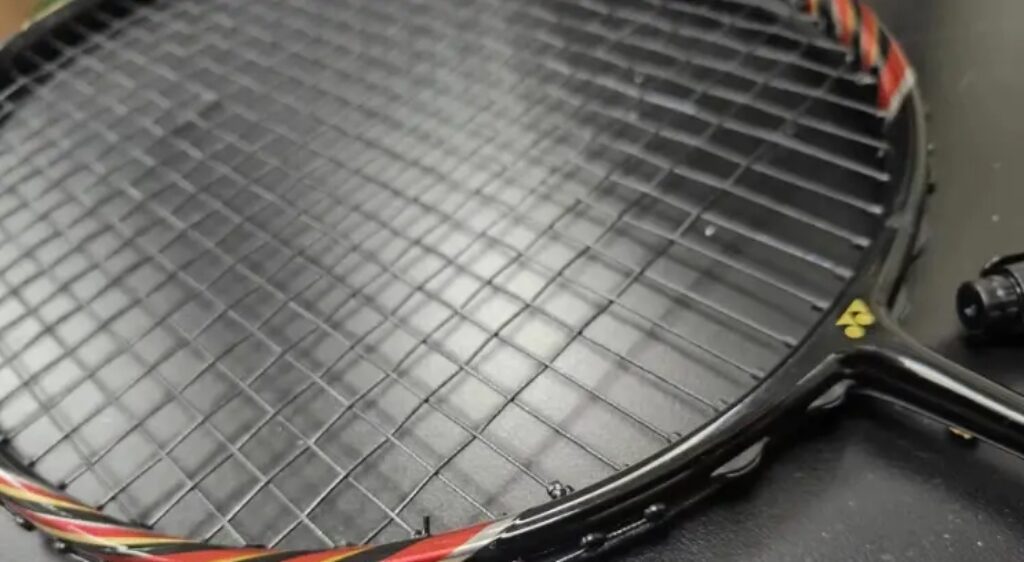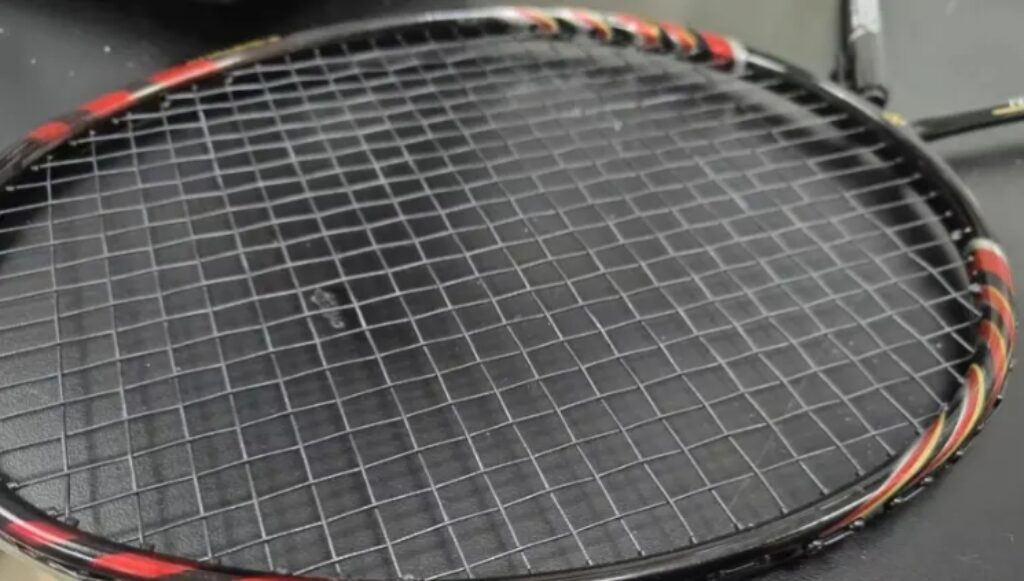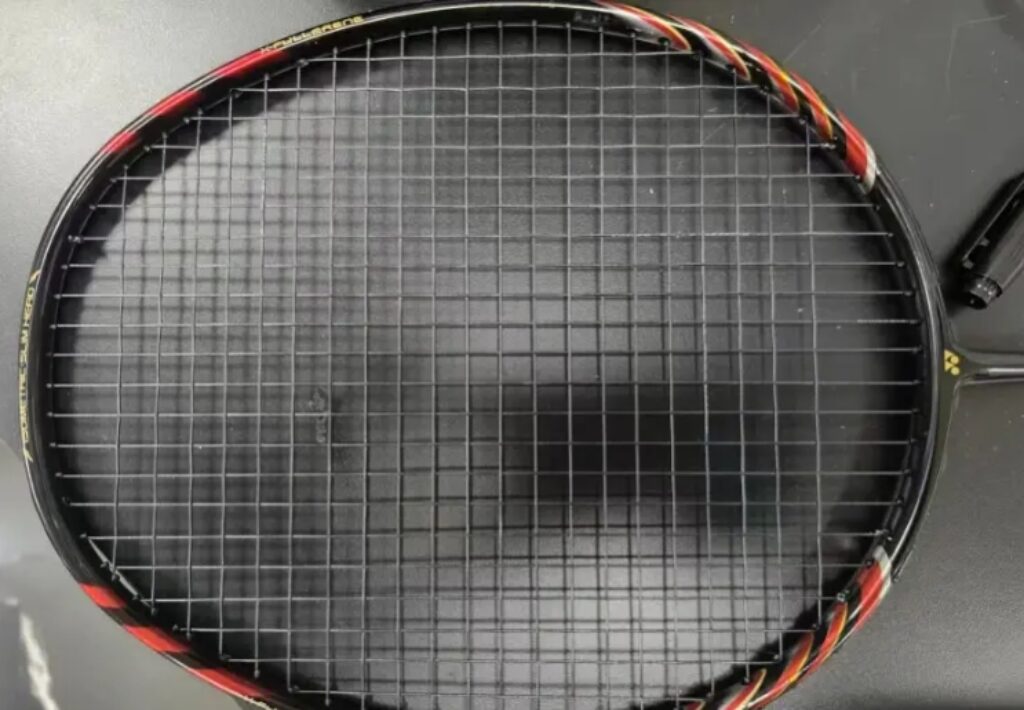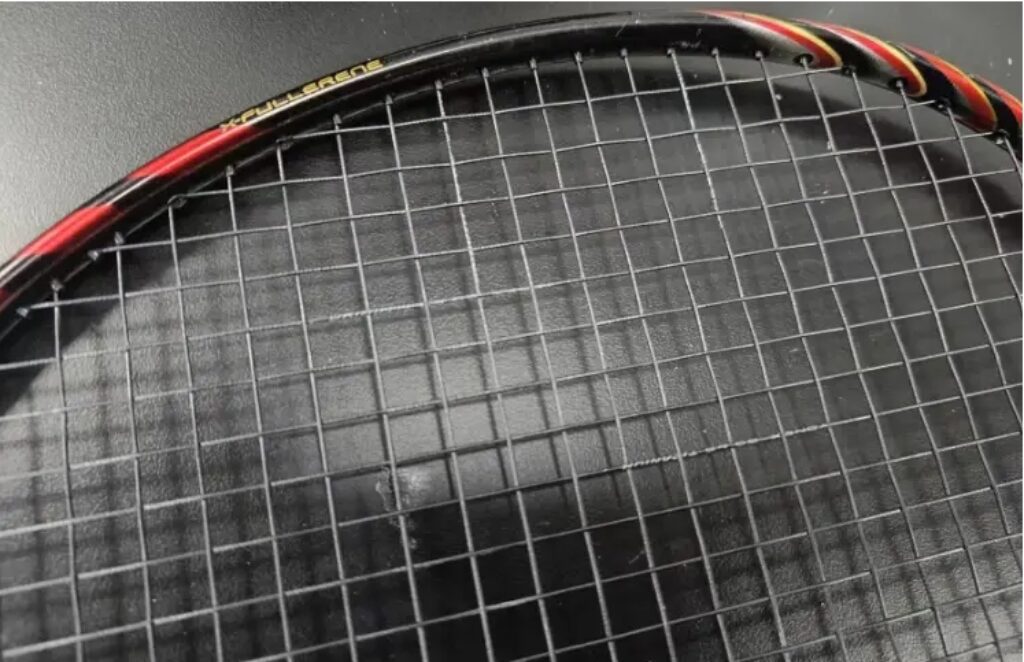This ancient “divine weapon” has been praised by many of my senior, experienced badminton friends. Even on BadmintonCN, I often see this 15-year-old racket being mentioned and celebrated by dedicated players.
I, however, don’t hold that kind of sentimental attachment, which puts me in a bit of a dilemma. Material progress is inevitable as part of human development, and entropy always increases. Can this ancient “weapon” still hold its own against the tide of new advancements? I have my doubts.

Specifications:
- Weight: 3U G4, without grip tape
- Total Weight in Use: 89.82g
- Balance Point: 295mm
- Shaft Length: 210mm
- Stiffness: High
- Frame Type: Aero box frame
- Stringing: 76 holes, 9–3 o’clock grooves
- Warranty: 24 lbs
- String: Strung at 24-26 lbs with XB63
Honestly, when it comes to aesthetics, I feel that Yonex’s design capabilities have regressed a bit. At least, the original version of the NS9900 I have is quite good-looking, with a sense of understated luxury. The black base paint, copper-red stickers, and large decorations on the sides of the frame convey a sense of speed without being flashy. The use of advanced materials and technology is showcased subtly, with a perfect balance. I can’t pinpoint why the NS9900 looks good to me, but it simply does. In contrast, newer models like the Arc11 Pro don’t appeal to me visually, and I can easily say why.
Regarding materials, the NS9900 employed fullerene, which was relatively new at the time, aimed at improving racket elasticity.

The NS9900 is a deceptively light 3U racket, feeling very nimble. As one of the kings of speed rackets back in the day, any lighter and it might not have been usable. When the impact of materials on racket performance wasn’t as pronounced, weight distribution played a key role in enhancing the feel. For the NS9900, this distribution makes it very enjoyable to wield. While some players felt it was challenging to generate power, I didn’t find this challenge too noticeable, especially during warm-up clears, where the racket felt normal. Despite the low swing weight, which made borrowing power less obvious, the racket felt comfortable to use, and the large sweet spot made it forgiving—overall, not difficult to get used to.
Even though the racket was famously stiff back then, by today’s standards—where many have encountered even stiffer rackets—it’s not as daunting.

However, just because a racket is easy to use doesn’t mean it’s easy to master. After adapting to its swing speed and stiffness, the lack of head weight leads to a lighter feeling when applying downward pressure, which takes time to adjust to. Although the 3U version, with its stiff shaft, doesn’t feel too light in the rear court, there can be a lack of confidence during smashes. First, the shots may lack weight, and while concentrated effort can produce powerful, penetrating shots, I often find myself wishing it was a more demanding racket. Secondly, once the string tension drops, the racket’s large sweet spot exacerbates the “trampoline effect,” reducing the responsiveness and power of the string bed significantly.
That said, the NS9900’s shaft still holds its own even today, with decent power transmission efficiency and the “resilience” often mentioned by senior players.

When compared to today’s speed rackets, the NS9900 doesn’t feel much different in terms of its tuning. It has a relatively short, stiff shaft and low swing weight, making it very fast and maneuverable in mid- and front-court exchanges. It excels in quick drives and blocks, where you can adjust the power and angle on the fly. Playing fast against fast works well, and a soft touch can disrupt your opponent’s rhythm effectively.
I particularly enjoy using the NS9900 for defending smashes. Whether lifting to the backcourt or countering with a cross-court drive, it feels precise. Unfortunately, after a few rallies, opponents stop smashing at me.
Additionally, the NS9900 performs well at the net, making it excellent for intercepting and cutting off returns. In this sense, it aligns with how many describe today’s ultra-light rackets as “windshield wipers.” However, given its price and specs, calling it a “luxury wiper” might be more appropriate.
The racket can also handle delicate net shots, such as drops or cross-court net shots. Even without a heavy head, the large face helps ensure a good return quality by making it easier to connect with the shuttle.

Finally, regarding handling under pressure, my personal experience has been quite positive. Its light weight, fast swing speed, and large sweet spot make it forgiving. Initially, I had concerns about its elasticity when dealing with backhand lifts or defensive shots, but with more use, I was able to hit quality returns. Thanks to its speed, it rarely puts me in overly passive situations. That said, this isn’t a racket where you can just casually flick a backhand and send the shuttle deep into the opponent’s court—the power you generate still determines its performance ceiling.
The honest truth is, while the NS9900 had a great feel back in the day, it doesn’t have a clear performance advantage over today’s rackets. I don’t doubt that some players may still prefer its unique feel and perform well with it, but there are plenty of equally excellent rackets in this category today. If you like it, use it—no need for too many reasons.

Leave a Reply